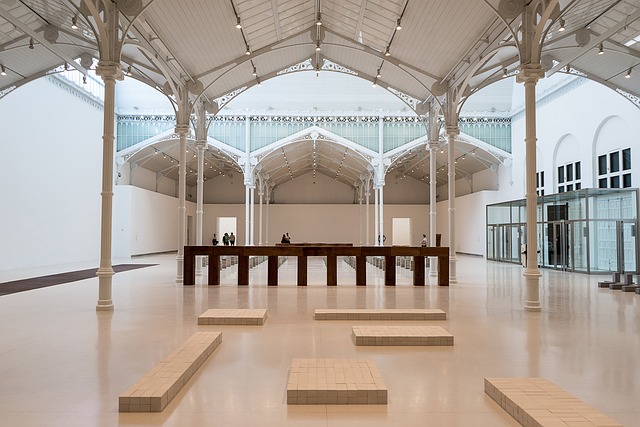Virtual Museum Tours: Exploring Culture from Home
In an ever-evolving digital age, the way we experience culture, art, and history has dramatically transformed. One of the most significant advances in this corner of the cultural landscape is the rise of virtual museum tours, which allow individuals to immerse themselves in the world of art from the comfort of their own homes. This article explores the captivating experience of virtual museum tours, their benefits, the technology behind them, and the future of cultural exploration in a digital world.
The Rise of Virtual Museum Tours
Virtual museum tours have gained immense popularity in recent years, particularly driven by the global challenges posed by the COVID-19 pandemic. As social distancing measures and lockdowns were enforced, museums and cultural institutions faced unprecedented challenges in reaching their audiences. In response, many organizations took to the digital realm, creating virtual tours that could transport visitors through their collections without requiring physical presence.
This innovation is not merely a response to a crisis; it represents a significant cultural shift. Virtual tours have opened doors for wider engagement, allowing anyone with an internet connection to explore some of the world’s most prestigious museums. Framing this transformation in the context of accessibility and democratization of culture is imperative to understand its broader implications.
Understanding Virtual Museum Tours
Virtual museum tours utilize various technologies to recreate the experience of walking through a physical museum. These tours typically involve a combination of panoramic photographs, 360-degree video, audio guides, and interactive elements that engage users in a meaningful way. What distinguishes virtual tours from simply looking at images online is the depth and interactivity they offer.
Many virtual tours are designed to replicate a real-life experience. They often include clickable points on the floor plan, allowing visitors to navigate from room to room at their own pace. As they explore the digital space, users can zoom in on specific artworks, read informative labels, and even watch videos that delve deeper into particular exhibits. This level of interactivity provides a richer understanding of the art, artists, and historical contexts behind the works on display.
Key Features of Virtual Museum Tours
The effectiveness of virtual tours can be attributed to several key features that enhance the user experience:
- Accessibility: Virtual museum tours eliminate geographical barriers. People from different parts of the world can access renowned museums, from The Louvre in Paris to The Metropolitan Museum of Art in New York City, without the need for travel.
- Convenience: Users can embark on a virtual exploration at any time. Whether it’s midnight or early morning, the exhibits are just a click away, making it easier to fit cultural experiences into any schedule.
- Multimedia Elements: Virtual tours often include audio narration, videos, and interactive displays that provide context and enhance learning. Visitors can engage with the artwork on multiple levels.
- User Control: Unlike conventional museum visits, virtual tours allow users to navigate at their own pace. They can skip certain areas or linger longer over pieces that particularly interest them.
The Technology Behind Virtual Museum Tours
The successful implementation of virtual museum tours relies on a convergence of various technologies. Understanding these technologies helps to appreciate the complexity and creativity involved in creating immersive digital experiences.
One of the most critical components is the use of high-resolution photography and videography to capture artworks and exhibition spaces in stunning detail. 360-degree cameras play a crucial role in replicating the feel of being in the museum, offering a panoramic view that enhances the immersion.
Another essential technology is virtual reality (VR) and augmented reality (AR). Some museums have begun to incorporate VR headsets which allow visitors to “walk” through the galleries as though they were there physically. By using AR apps on mobile devices, users can see the exhibits overlaid in their own spaces, creating a fascinating hybrid experience.
In addition, artificial intelligence (AI) increasingly plays a role in tailoring content for visitors. By analyzing user interactions and preferences, AI can offer personalized recommendations, guide users through the tour based on their interests, and even answer questions about specific pieces on display in real-time.
Benefits of Virtual Museum Tours
The benefits of virtual museum tours extend beyond convenience and accessibility. They also play a significant role in education, community engagement, and cultural preservation.
Education is perhaps one of the most powerful aspects of virtual museum tours. Schools and educational institutions can utilize these tours as a part of their curriculum, integrating art and cultural history into lessons without the need for field trips. Teachers can tailor materials to complement the virtual listings, creating an enriched learning experience for students of all ages.
These tours also foster community engagement. By providing access to cultural treasures, museums can connect with individuals who might not normally have the means to visit, whether due to distance, financial constraints, or physical limitations. By engaging with a wider audience, institutions contribute to a more inclusive narrative about culture and history.
Moreover, virtual tours play a vital role in the preservation of cultural heritage. As remote access to collections increases, so does the opportunity for documentation and archiving. The digitization of artifacts and art pieces means that even in the face of natural disasters, theft, or decay, these pieces can survive in a digital format, preserving them for future generations.
Challenges to Overcome
While virtual museum tours present numerous advantages, several challenges need to be addressed. The first is the digital divide; not everyone has equal access to the internet. Low-income areas may struggle with connectivity, limiting the outreach of virtual experiences.
Another challenge is the potential loss of the traditional museum experience. Many art enthusiasts cherish the ambiance of physically being within a gallery, the textures and scale of the artwork, and the conversations sparked by shared experiences. Museums face the delicate task of balancing digital offerings with the need to draw visitors back to physical spaces.
Additionally, there can be a steep learning curve associated with new technologies, creating a barrier for some users. Older populations, in particular, may struggle with navigating virtual platforms. Museums must invest in user-friendly solutions and provide sufficient support for diverse audiences.
The Future of Virtual Museum Tours
As technology continues to advance, virtual museum tours will likely evolve further, pushing the boundaries of what is possible in digital cultural experiences. We can expect to see enhanced interactivity, improved accessibility options, and even more compelling storytelling through art.
One future possibility is the integration of AI-driven companions. Virtual guides may accompany users through their tours, offering insights based on the individual’s interests and learning style. This could personalize experiences even further, allowing for a tailored journey through art history.
Another exciting development is the potential for hybrid experiences, where virtual and physical museum visits intersect. Institutions may begin to offer augmented reality elements in their physical spaces, creating interactive exhibits that allow visitors to delve deeper into information digitally as they wander through galleries.
Conclusion
Virtual museum tours represent a remarkable leap into the future of cultural exploration. They not only make art and history more accessible but also enrich our understanding of the world around us. By embracing technology, museums have found innovative ways to engage audiences, educate communities, and preserve cultural legacies.
As we navigate our post-pandemic reality, it will be essential for cultural institutions to innovate continually, merging the physical and digital realms. The journey through art and history does not need to be solitary or bound by geographical limitations; it can be an inclusive adventure that welcomes everyone, wherever they may be. Virtual museum tours are more than just an alternative; they could well be the pathway to a deeper appreciation of our shared human experience.


